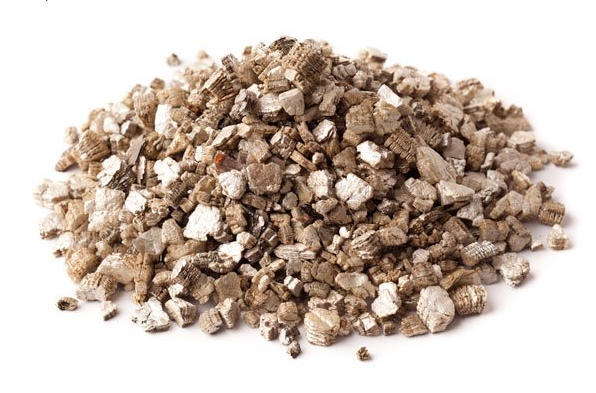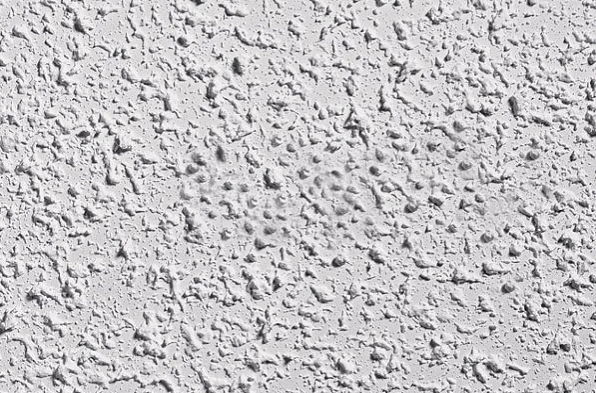Asbestos is still a danger to home and property owners today, nearly 40 years after it was totally phased out in construction. Asbestos exposure has been directly linked to many health conditions including respiratory issues and cancers. If you are buying a new home or building or thinking about remodeling a current one built before 1990, identifying potential asbestos should be one of the first steps you take.
Asbestos was phased out of most uses in 1983 but was still used in various projects around the US. Using 1990 as a ‘hard’ date for taking asbestos inspections seriously is a good starting point but does not mean that all pre-1990 structures contain asbestos and all post-1990 structures don’t.
Let’s take a look at how to identify potential asbestos, where asbestos is commonly found, and what to do if you suspect asbestos.
Identifying Asbestos
Identifying potential sources of asbestos can be tricky, and typically requires special training. It can be found in many common surfaces and construction agents. Asbestos doesn’t have any unique indicators–it can look like a regular floor tile or piece of insulation. There are areas where asbestos was more commonly found, and this is where to start your search for potential asbestos if you elect to do so yourself. However, you are urged to engage the services of a licensed professional asbestos inspector for that purpose.
If you are looking for asbestos, make sure you use proper safety equipment, including air filtration, eye protection, and skin protection. OSHA regulations mandate that such equipment be used by licensed professional asbestos inspectors and removal workers. The first step is knowing where to look. If your home or property was built before 1983, there are several common areas to check for asbestos:
- Attics
- Basements or sub-level structures
- Electrical utility areas (meters, switchboards, etc.)
- Insulation used in any capacity
- Materials used to construct walls and ceilings
- Old sheeting used in any capacity
- Pipes, especially drainage pipes
- Roofing
Remember, the above areas are not guaranteed to contain asbestos, they are just the best areas to look. Asbestos may also be located elsewhere, but these are the best places to start an inspection.
What does Asbestos Look Like?
Asbestos materials take many forms and can be almost impossible to identify without proper testing. This is why it is advised to look at the list of common areas to check for asbestos. While looking at the areas asbestos is commonly found, the following may be indicators of asbestos:
- Damaged ceiling tiles
- Damaged electrical utilities
- Damaged roofing or shingles
- Discoloration appearing on specific surfaces
- Drywall that is cracked or crumbling
- Floor tiles that are heavily damaged or cracked
- Old or unknown insulation
- Walls and panels that are cracked or crumbling

Example of unusual asbestos insulation.
Discovering any of these things does not mean you have found asbestos. This list is to provide information on damage indicating where asbestos is commonly found.
You should 100% take proper safety precautions if you notice more than one of the items listed above. Proper air filtration, eye protection, and skin protection are needed.
Where Asbestos is Commonly Found
Buildings and homes built before 1983 have a large chance to contain asbestos somewhere in their construction. Asbestos was commonly used in:
- Caulk and other sealants
- Cement pipes and sheets
- Drywall
- Fire doors
- Fireproof materials
- HVAC dust connectors
- Insulation
- Low-density insulating board and ceiling tiles
- Plaster
- “Popcorn” ceilings
- Roofing shingles and tar
- Spray-on insulation
- Steam pipes
- Transite panels and pipes
- Textured paints
- Vinyl floor tiles

Example of a ‘popcorn’ ceiling texture.
Click here for a large list of things that potentially contain asbestos.
Nothing on this list is guaranteed to contain asbestos–this is just a reference for the areas where asbestos materials were commonly used in older construction. Noticing multiple areas containing old, discolored, or damaged things on the list above should be approached with caution.
The key takeaway from ‘where asbestos is commonly found’ is to look for old or damaged instances of the above areas. Cracking, crumbling, discoloration, strange insulation, and structural damage are all reasons to take a closer look at any area on your property for potential asbestos. Remember: there are still home and building inspections that do not check for asbestos. Checking for potential asbestos yourself or by the recommended means of a licensed asbestos inspector is the only way to be sure.
What Should I Do if I Think I have Asbestos?
First thing: DON’T TOUCH OR ATTEMPT TO REMOVE OR DISTURB IN ANY WAY ANY SUSPECTED ASBESTOS YOURSELF. Simply disturbing resting asbestos can throw the particles in the air where they can be dangerous to anyone on-site. If you think you have discovered asbestos, leave the area and do not disturb anything in the area.
If you think you may have identified asbestos in your home, property, or job site, the first thing to do is call a professional for testing if the inspection and testing have not already been performed by a licensed professional.
Make sure any asbestos removal contractor you speak to is licensed in the state your home or property is in. Some contractors are able to handle inspecting for asbestos and testing samples, and conducting the removal process, but it is recommended to contract separately to avoid any potential conflict of interests. Professional asbestos testing and/or asbestos removal contractors will ask you a few questions before making recommendations on how to proceed. Talking to a professional for your specific case is the only way to get reliable information on whether or not you need a test and what to do next.
Click here to find a contractor in Illinois.
When Should I Test for Asbestos?

If your building was built before 1990, it is likely it contains asbestos material in some form. If you see multiple examples of crumbling infrastructure listed above, you should look into asbestos testing. A cracked wall or two may not mean you have asbestos, but if you notice multiple areas, ceilings, tiles, or flooring that are breaking down, it is possible asbestos fibers are being released into the air and a test for asbestos should be scheduled.
Another indicator for when to test for asbestos is if you discover an overwhelming amount of insulation in an attic, basement, or other utility area. Piles of unknown insulating materials from buildings constructed prior to 1990 should be approached with caution.
What Should I Look for from an Asbestos Test?
Aside from a yes or no result, asbestos testing can reveal many things. Common asbestos test results will inform you of the type of asbestos, associated risks, and options for removal. After getting the results, look at them and decide on the best course of action to remove any asbestos in your home or property in consultation with a licensed asbestos removal contractor.
What to do After a Positive Asbestos Test
Find a contractor to safely remove all the asbestos from your home or property. Asbestos removal services differ slightly from contractor to contractor. Make sure to find the right asbestos removal contractor for your needs.
As mentioned above in the “What Should I Do if I Think I have Asbestos” section: it is recommended to use separate contractors for asbestos testing and removal. If the inspection contractor offers services after a positive test it will benefit you to evaluate your options.
Some asbestos removal contractors specialize in home removal, while others focus on commercial or industrial, and school removal. Finding an asbestos removal contractor that’s right for your needs is the first step to take for removing any asbestos, inasmuch as regulations and procedures will differ depending on what type of structure contains the asbestos material. After hiring a contractor for asbestos removal you need to make sure the site is empty. No one except for the removal team should be on-site during the removal process. Make sure any objects near the asbestos are removed. This includes things like appliances, decorations, furniture, rugs, and anything else in the room that can be moved. Make sure your contractor has supplies to seal anything that is too big to move. These and other precautions and requirements are well known to and practiced by licensed asbestos removal contractors.
Testing or Removing Asbestos in Illinois

IECA works with a number of contractors specializing in asbestos testing and removal. If you have a home or property in Illinois that may have asbestos, one of our members can help you with any asbestos-related services you may need.
Click here for an extensive list of asbestos removal contractors in Illinois.
If you have any questions or concerns that you may need asbestos removal, please contact us.
DISCLAIMER REGARDING INSPECTION AND TESTING FOR ASBESTOS
The Asbestos inspector must be currently licensed in the state they are taking the samples as a result of their inspection. The samples must go to an accredited lab to be analyzed. The removal contractor can take its own samples, so long as the contractor employs licensed asbestos inspectors to perform that task. However, in the opinion of many, having an independent 3rd party licensed asbestos inspector gives the best assurance that all suspected asbestos is properly identified and tested for the benefit of both the property owner and the removal contractor.
Tags: Abatement, Asbestos, Chicago, Environmental Protection Agency, National Environmental Policy Act, Recommendations, Worksite Cleanup